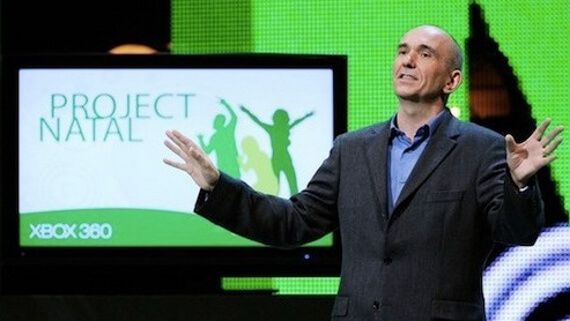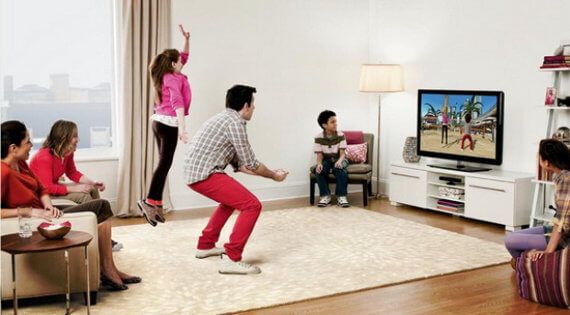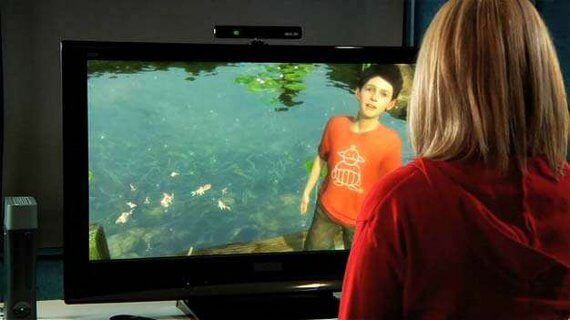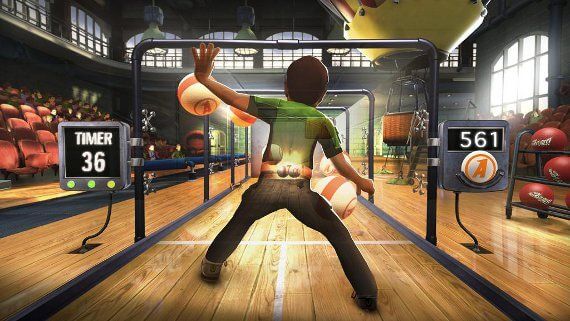Two years ago at E3 2009 Microsoft unveiled 'Project Natal' to the world and blew us into next week with its promise and potential. It wasn't real at that point, of course, but its concept had been slow-cooking behind closed doors at Microsoft for years.
It was introduced as a total game-changer and was heralded as an invention of the future - forget the Wii waggle-stick and whatever Sony was working on, it seemed to suggest, you are witnessing our first steps on the road to a digitally-interactive future - and its all for you.
The video showcase that served as Project Natal's reveal promised a true evolutionary step forward - not just for videogaming but also in the way people would interact with technology in general. Project Natal, it was said, would recognize your face and sign you into Xbox Live automatically. You could control every function of the console with voice alone, and you could even show the device real-world objects that it would then scan and reproduce digitally - for use in games and other types of entertainment.
Much of the video was pure hokum, certainly, and it wasn't without its share of buzz-words and groan-inducing situational-demonstrations. The smiley, carefree automaton family - forever the mythic and oft-targeted demographic of casual game developers - reared their perfectly-groomed heads once again, this time to caper around their over-sized, immaculate living room and partake in a cheesy display of Natal-fueled gaming. Look, little Johnny can play a racing game by gripping an invisible steering wheel, while dad scampers about by his son's feet, mimicking changing the tires with his invisible torque-wrench.
Unconvincing pie-in-the-sky demonstrations aside, Natal's real show-stopper came in the form of a talk by Lionhead's Peter Molyneux, and a certain little boy named Milo.
Project Milo made everyone sit up and take notice of Natal in a way Microsoft's jive conceptual videos never could. Considering Project Milo was essentially just a tech demo featuring a little boy swinging from a tree by a stream, what it actually did was show the world an extrapolation of all the staggering technologies present in Natal, but taken to their natural, videogame-related conclusions. Speech-recognition in Natal at launch would eventually mean you would be able to talk to Milo and conduct meaningful conversations with him. Facial-recognition in Natal at launch would eventually mean Milo would recognize you and strike up a conversation about topics specific to you. Image-scanning and digital importation in Natal at launch would eventually mean you could draw pictures on paper - in the real world -- and 'hand' them to Milo in the digital world for him to hang on his wall and critique.
The reality, almost two years later, is considerably less impressive. Project Natal, now known as Microsoft Kinect, has finally made its way from Microsoft's collective brain and into the homes of people like you and me but the creative drive for Project Milo fizzled-out fairly rapidly once the less-palatable applications for 'boy-simulation' software bubbled to the surface and made everyone on the internet, not to mention Microsoft themselves, very uncomfortable indeed.
So, what is Kinect doing for us right now? Unfortunately, not a great deal, and certainly nothing new. For those of us willing to move furniture and reconfigure our playing spaces to accommodate the strict detection requirements of the device, mindless family-centric distraction games seem to be the order of the day. This holiday season no doubt saw a notable up-tick in families jumping and waving and bouncing in front of their TVs from any year previously on record.
Apparently, judging by the sales figures, this is what the market wants - at least right now. Easily-accessible games that the whole family can enjoy are where Nintendo dominates year in and year out, and it seems a slice of Xbox 360 owners crave this type of game also. But where do we go from here? The dearth of shovelware for Kinect currently available has a distinct Nintendo Wii aroma to it. Surely Microsoft didn't spend all this time, money and effort, not to mention a Times Square media launch extravaganza, simply to occupy the same market space as Nintendo, and throw a never-ending swath of jumping and moving games at the shelves until people stopped buying them?
Don't be alarmed. What we are seeing here are the inevitable baby steps that come with any new gaming technology. Kinect games, as of now, take a very literal approach to the fact that Kinect is something you control with your body. What we should be seeing soon in the second generation of Kinect games, I hope, are those that take advantage of Kinect's many wonderful features in order to immerse us in gaming experiences we haven't seen before.
Continue to page 2 for what type of game we think would show Kinect's true potential!
I know it sounds very trite of me to say so, and you may be thinking that it's easier said than done, but I have an idea on this -- this article actually has a point.
In order to justify the immense potential revving under Kinect's hood, we need a Kinect game that allows the player to interact and control every facet of the game experience with vocal commands, body motions, and subtle hand and finger gestures. If there is one major downside to Kinect's control scheme it's that, no matter how good it is, it will never be able to simulate walking or running in a natural way, whereas today's contoller-based games don't have this problem. With that in mind, Kinect games of tomorrow have to move away from game types that involve a main character traversing an environment. In fact, if you compress this idea down to its basic parts, Kinect can do any game well, as long as they aren't 1st person shooters or 3rd person action games.
So what types of games does that leave us with? An obvious choice would be strategy games. One thing Kinect simulates very well is mouse-input (by way of hand movements and gestures). To extend this idea, any game that utilizes a 100% mouse input scheme can easily and intuitively be implemented in Kinect. The strategy genre has been arguably withering on the vine of late, yet a solid strategy release with interesting features and a low barrier-for-entry could inject some much-needed gamer-interest and diversify Kinect's catalog too.
Here's my pitch: Picture a real-time strategy game in which you play an extremely powerful being. Overseeing the development of your faithful subjects from a static position above the play area, you move the world around you as needed, navigating with your hands. The mouse pointer on-screen is replaced with an actual hand, that you control with your hand. You can reach into the game world and interact with every asset inside -- followers, trees, animals, rocks, purely through hand motions. You can gather crops by ripping them out of the earth and dropping them on supply huts, conjure rain over their farmlands by casting an incantation with hand gestures. Perhaps even adopt and train an adorable little creature, that will interact with your miniature followers and be the physical embodiment of your god-like presence. Conjure a leash for him with more incantations that you draw in the air, and then pull him around by the leash, snapping your fingers to get his attention, stroking him to encourage certain behaviors, smacking him to discourage other behaviors. You get the idea.
If my pitch sounds at all familiar, it is because I essentially just described the design document for a 10 year-old game called Black & White, developed by Lionhead Studios - which was and still is helmed by Peter Molyneux. What is interesting here is that, although the game met almost universally-mediocre scores when it was released, it wasn't without revolutionary ideas and intriguing gameplay. But the most important facet of Black & White was that it unknowingly built its entire control scheme on an input-type that didn't exist yet, and had to retro-fit it to work with a mouse. It is only now, with the launch of Kinect, that a game such as Black & White can thrive in and fully realize its own potential and the potential of its platform.
So, to summarize, the man who is presently in-charge of leading the direction Kinect will go in the next few years is also the man who, 10 years earlier, created a game that made people play exclusively through hand-gestures. This is a portentous omen. I for one am happy that Molyneux is leading the charge on Kinect. His continuing vision of evolutionary gaming experiences is inspiring, even though his attempts generally fall short of his expectations. But in the vast and ever-mutating world of game development, I am certain we will see more than simple party games and aerobic simulators from Kinect in the very near future, so long as Molyneux holds the reigns.






